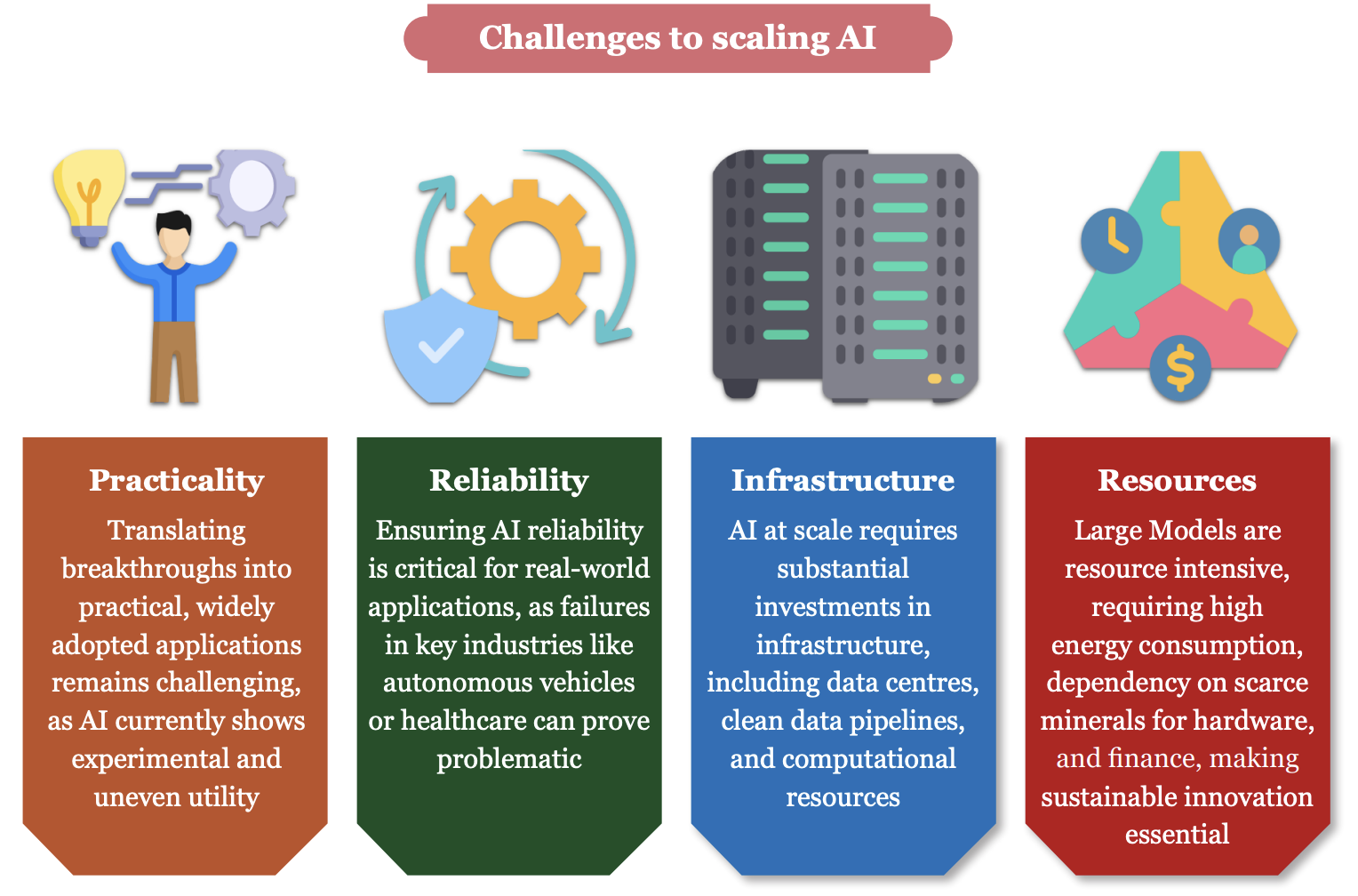Introduction
- Artificial Intelligence (AI) will disrupt labour markets because of developments in the field over last four years.
- This economic displacement adds to a fear about AI exacerbating existing social and economic divides.
AI Scenario
- Between 2021 and 2023, global corporate investments in all types of AI totaled USD 761 billion.
- International Labour Organisation estimates that nearly 75 million jobs globally are at complete risk of automation due to AI.
- NASSCOM estimates that the Indian AI market will grow at 25 to 35% CAGR by 2027.
A Future for human centric automation

- Deployment of AI presents both opportunities and challenges for a labour rich India.
- Past technology revolutions, when not carefully managed, have been painful characterized by widespread economic hardships, protracted unemployment for those displaced and widening income inequalities.
- Mitigating the risks to India's labour markets requires robust Enabling, Insuring, and Stewarding Institutions.
- A coordinated effort between the government, private sector, and academia is required for a future of work where AI is 'Labour Augmenting' rather than 'Labour Replacing'.
- The future of work revolves around 'Augmented Intelligence', where the workforce integrates both human and machine capabilities.
- Mitigating the risks to India's labour markets requires robust Enabling, Insuring, and Stewarding Institution
Conclusion
- The policymakers must balance innovation with societal costs, as AI driven shifts in the labour market could have lasting effects. Similarly, the corporate sector have to act responsibly, handling the introduction of AI with sensitivity to India's needs.
One-Line SummaryAI and automation are reshaping India's labor market, presenting both risks and opportunities, requiring policy-driven workforce reskilling, job creation strategies, and AI-focused labor reforms. |
Relevance for UPSC
|


